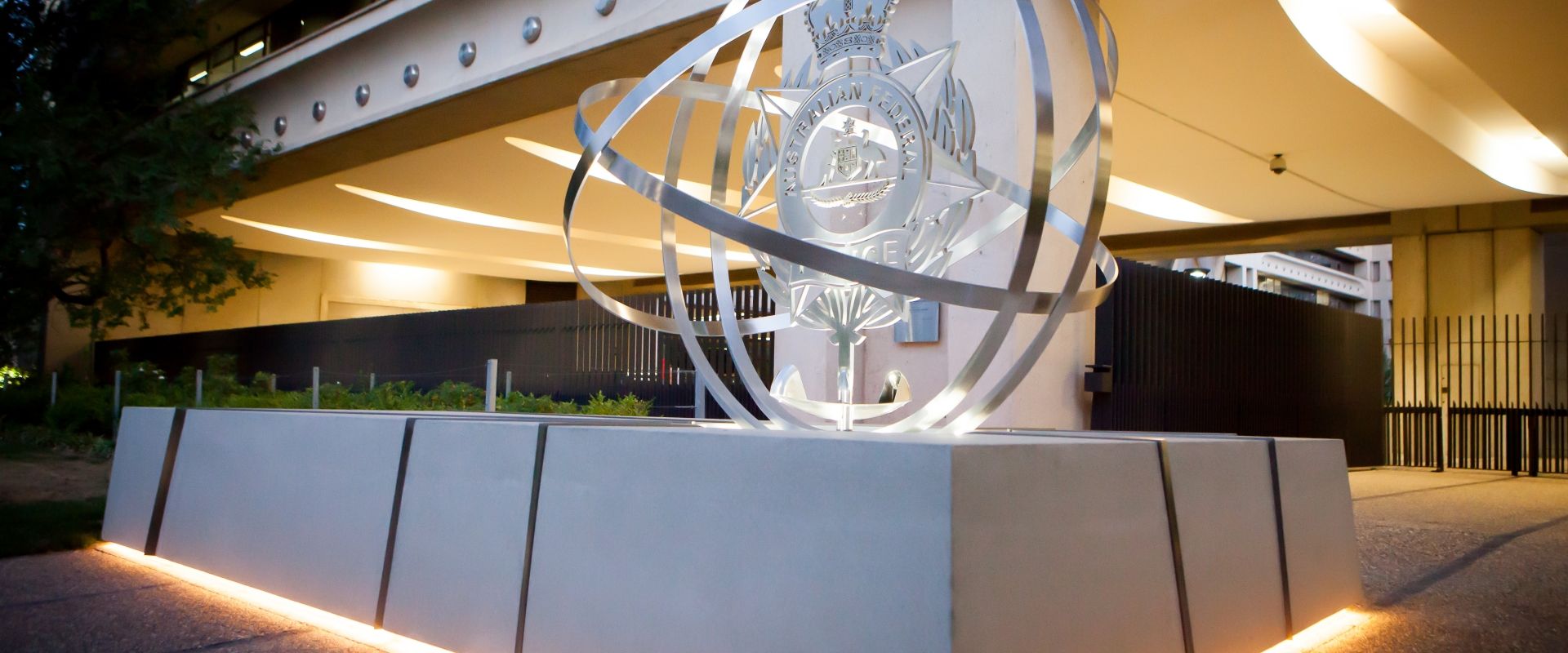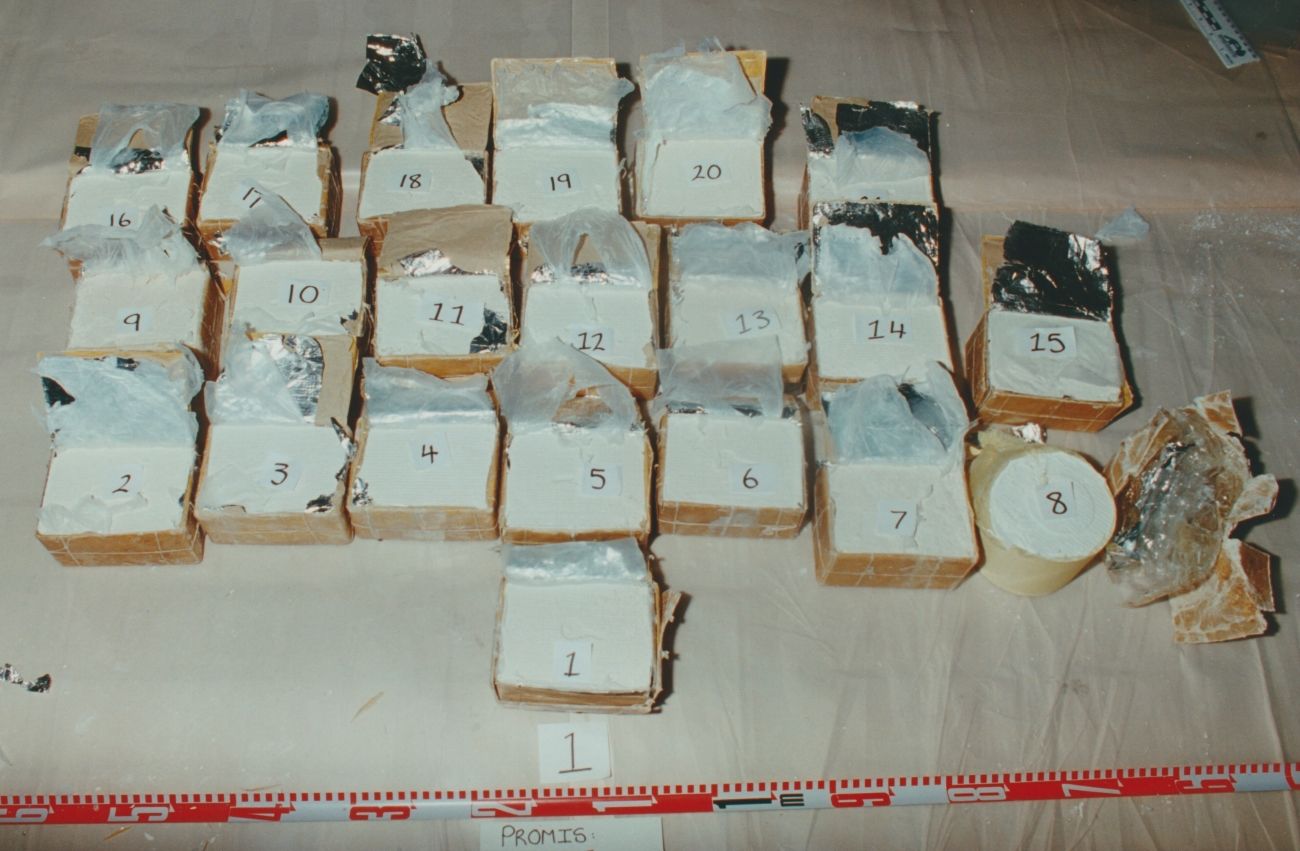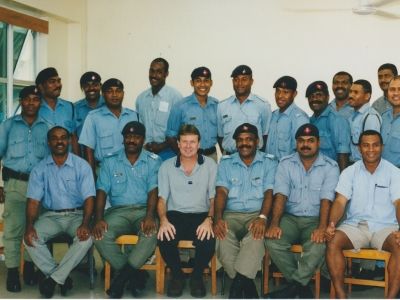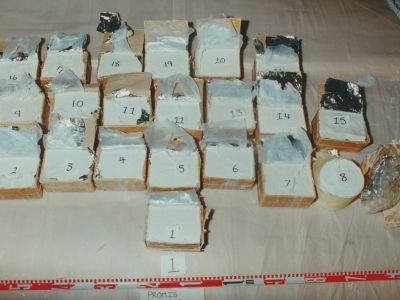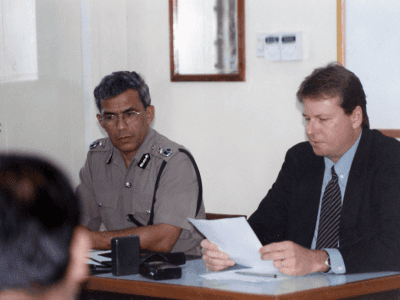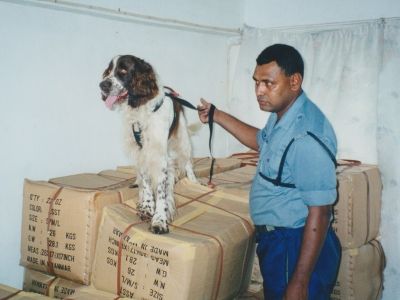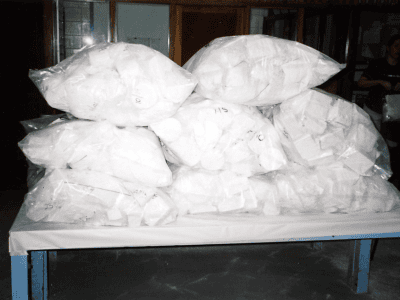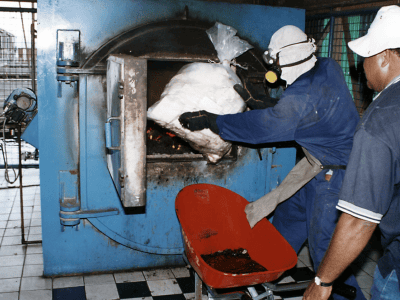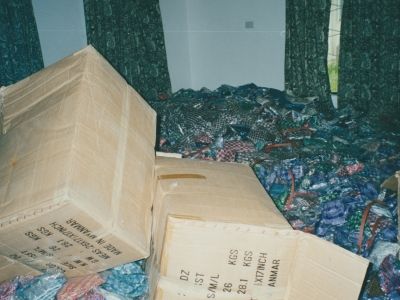In early 2000 the AFP gathered criminal intelligence from Thailand and Canada pointing to there being a large stockpile of heroin in Fiji, ready to be drip-fed into Australia and potentially New Zealand. Police in Fiji agreed to an AFP proposal to conduct a joint investigation and officers from other nations subsequently joined the team. Ultimately, more than 50 law enforcement personnel from five nations worked together to identify syndicate members. This led to finding the stockpiled drugs, which were under the control of a Fijian/Chinese businessman who ran a prominent Chinese Restaurant in Suva.
Fiji police named the investigation ‘Operation Palm Beach’; the AFP called it ‘Operation Avian/Logrunner’. One of the AFP investigators who was sworn in as a special Fiji Police member was then Federal Agent Melissa Northam, who today is the Detective Superintendent in charge of AFP personnel in Far North Queensland:
‘I was given a day’s notice before we flew out. We were told we would be there for a fortnight but we ended up being there for much longer. The entire time we had to work discreetly so as we didn’t attract the attention of anyone not directly involved.’
An unexpected surprise was the proximity to several targets. AFP Intelligence Analyst Bill Lee recalls:
‘On the first night I went for a walk in the grounds of the hotel we were staying at. I overheard a group of Asian males near the pool talking in Cantonese. Very quickly I figured they were syndicate members talking about narcotics. It turned out one of them had flown into Fiji on the same plane as us, and the group were meeting at the hotel to discuss their plans. At the time we didn’t know their identities, but this gave us a great start.’
Despite this early lead, it proved to be an intensive three-month investigation involving painstaking surveillance and detective work in difficult conditions. Strict nightly curfews were enforced across Suva by army patrols, a legacy from a coup earlier in the year which had resulted in the arrest and imprisonment of coup leader George Speight. The fallout from the coup had also placed the country’s legal system into a state of flux. For example, at that point in time, search warrant applications had to be presented to Fiji’s President for his personal consideration. This added a significant layer of complexity for police.
‘It was a dangerous period to operate covertly’ remembers Northam, ‘almost everyone was on edge about the country’s future. One day an improvised explosive device was found in our hotel car park. It wasn’t targeted at us, but against the adjacent courthouse as a diversion to aid a planned escape of George Speight. The political tensions eventually grew so much that a failed military mutiny in November forced us to leave the country for a period of time.’
Police efforts were rewarded on 28 October 2000 when they seized 35kgs of heroin hidden in an esky and a cooler bag, located in a vehicle parked at the Suva Yacht Club. Follow-up inquiries led police to a large nearby house where 322kgs of heroin were found secreted in numerous boxes of packaged boxer shorts. Subsequent analysis indicated the average purity of the heroin was 73%.
Most of the arrests occurred in Fiji; one syndicate member was arrested in Kiribati for immigration and fraudulent document offences.
At the time it was the largest illicit drugs seizure in the South-West Pacific. Moses Driver, the acting Fiji Police Commissioner in 2000, personally oversaw the investigation and ensured it had the local resources needed for success. Retired AFP Assistant Commissioner Bruce Giles, who coordinated and led the investigation in Fiji, fondly remembers the work that was achieved:
“Logrunner was the first truly operational counter-narcotics investigation the AFP undertook offshore. It set the template for how multinational, multijurisdictional investigations should operate. There was a fantastic commitment from each police agency to work together to achieve a common goal. We couldn’t’ have succeeded without everyone playing their part.”
This investigation demonstrated that criminal syndicates often try their hands at multiple types of crimes. In this instance police connected syndicate member activities to drug, people smuggling, immigration and counterfeiting crimes.

